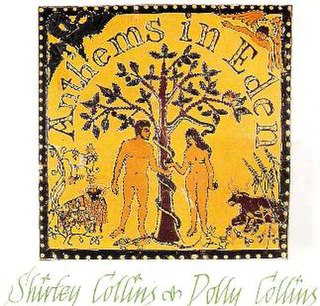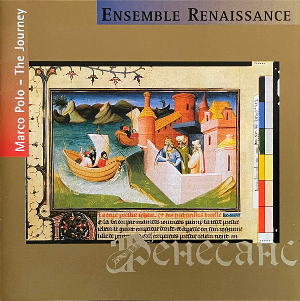
In organology, the study of musical instruments, many methods of classifying instruments exist. Most methods are specific to a particular cultural group and were developed to serve that culture's musical needs. Culture-based classification methods sometimes break down when applied outside that culture. For example, a classification based on instrument use may fail when applied to another culture that uses the same instrument differently.

The crumhorn is a double reed instrument of the woodwind family, most commonly used during the Renaissance period. In modern times, particularly since the 1960s, there has been a revival of interest in early music, and crumhorns are being played again. It was also spelled krummhorn, krumhorn, krum horn, and cremorne.

A rauschpfeife is a capped conical reed musical instrument of the woodwind family, used in Europe in the 16th and 17th centuries. In common with the crumhorn and cornamuse, it is a wooden double-reed instrument with the reed enclosed in a windcap. The player blows into a slot in the top of the windcap to produce the sound.

Anthems in Eden is a 1969 album by Shirley and Dolly Collins, with the Early Music Consort of London, directed by David Munrow. The album originally consisted of a 28-minute set of folk songs plus seven other individual pieces performed by the same group. The musical arrangements for these eight pieces included early music instruments, such as viols, recorders, sackbuts and crumhorns. In 1976, six new songs were recorded with a different assortment of accompanists, to replace the original seven individual songs. This 1976 album consisting of the 28-minute set plus the six new songs was released by Harvest Records under the title Amaranth. Subsequent releases have combined all fourteen pieces under the original title, Anthems in Eden.

During the reign of Queen Elizabeth I (1558–1603), English art and high culture reached a pinnacle known as the height of the English Renaissance. Elizabethan music experienced a shift in popularity from sacred to secular music and the rise of instrumental music. Professional musicians were employed by the Church of England, the nobility, and the rising middle-class.
Anthony Gilbert was a British composer and academic, long associated with the Royal Northern College of Music. He also taught for extended periods as head of composition at the New South Wales State Conservatorium. His works, many of them for larger chamber ensembles, were published by Schott and University of York Music Press. Several of them were written for particular musicians, who performed and recorded them. He wrote a memoir, published in 2021.
London Saxophonic is a saxophone ensemble begun by Gareth Brady, Will Gregory and Simon Haram, while they were studying at the Guildhall School of Music and Drama. They made their debut in 1994 on Atlantic Records with Sax Pax for a Sax, a collaboration with Moondog, who composed all of the works on the album. In 1998, they went to the now-defunct label Tring with a Michael Nyman retrospective titled An Eye for a Difference, produced by David Roach.
Síppal, dobbal, nádihegedűvel (2000) is a song cycle in seven movements by the composer György Ligeti based on poetry by Sándor Weöres. The work is scored for mezzo-soprano and an unusual ensemble of percussion and wind instruments. The lyrics are whimsical and often nonsensical, sometimes combining random Hungarian words or parts of words into a nonsense language.
Ensemble Renaissance is the first early music ensemble in Serbia and the second in south-eastern Europe, having been founded in 1968. Ensemble Renaissance usually focuses on the music of the Middle Ages, Renaissance and Baroque. Occasionally, however, Ensemble performs modern music on ancient instruments.
Calliope is a New York City-based band which plays Renaissance music and modern music using early musical instruments, such as the sackbut, shawm, viol, and the hurdy-gurdy.
Lauda Musicam of Atlanta is one of the largest amateur musical ensembles performing early music in the United States. The ensemble's performances consist of mostly Renaissance music, but Baroque music and Medieval music are often included.
The Texas Early Music Project is a performing arts ensemble based in Austin, Texas, that focuses on bringing audiences a closer knowledge and appreciation of Baroque music, Medieval music, Renaissance music, and early Classical-period music. The group uses historical instruments in keeping with historically informed performance practice. The ensemble was founded in 1987 by Daniel Johnson, who remains the group's artistic director. The group is classified as a non-profit organization and operates primarily on grant money and donations for individual and corporate supporters. Income is supplemented by ticket sales and merchandise sales. Texas Early Music Project is a member of Early Music America. Performers are primarily professional musicians from the Austin area, although performers visit from Texas at large, from all over the United States, and occasionally internationally.

Marco Polo – The Journey is an album by Ensemble Renaissance, released in 1992 on the Artelier Music label in Germany. It is Renaissance's 11th album. The heme of the album is early music from the time of the travels of Marco Polo. It is one of the Renaissance's more eclectic works, covering not only the instrumental istanpittas of the Italian Trecento and earlier Franciscan laudas, but also Byzantine chant, girl songs from Cyprus preserved in the Manuscript 1203 kept in Iviron monastery, Persian and Arabic dances, traditional Music of Mongolia and Ancient Chinese ceremonial music. Marco Polo is one of the Ensemble's biggest successes, having spent a few weeks at the top of the classical music charts in Germany, in the 1993.

Mon amy is a vinyl album by Ensemble Renaissance, released in 1985 on the PGP RTB label, Ensemble's fourth album overall. It is a compilation of the Renaissance tunes from various styles: Spanish Renaissance music from the Cancionero de Palacio, Elizabethan music from the William Shakespeare's theatre and works by John Dowland, Franco-Flemish School, pieces from the most famous dance collections of Tielman Susato, Michael Praetorius and Claude Gervaise. Mon amy owes its name to the rondeau from Susato's collection Danserye. The material from this LP also appears on their German CD Anthology in the remastered form.

Hommage a l'amour is a vinyl album by Ensemble Renaissance, released in 1990 on the PGP RTB label, Ensemble's seventh album overall and their last album recorded for PGP RTB. It is a compilation of the Medieval tunes from the various styles and manuscripts: songs from Carmina Burana, a rondeau by Adam de la Halles, trouvere and minnesang songs, Italian Trecento ballata by Francesco Landini, a virelai from Llibre Vermell de Montserrat in addition to the istampittas preserved in the manuscript kept under the number MS 29987 in the British Library. LP consists of two sides: Hommage a la printemps, a homage to spring, and Hommage a l'Amour, a homage to love. The material from this LP will find its place on their German CDs Anthology and Marco Polo – The Journey in a remastered form.

2+2 is an eponymous album of a vocal quartet called 2+2 with music by the Latin jazz ensemble known as Salsa Picante that was led by the American keyboardist/composer-arranger Clare Fischer. It was recorded in September 1980 and released in February 1981 by Pausa Records, and in Germany on the MPS label, as Foreign Exchange – The First Album. Tracks 1, 2, 3, 6 and 7 would be reissued on CD in 1999, and as a digital download in 2012, as Latin Patterns, a compilation of remastered highlights from four of Fischer's MPS LPs from this period.
Pour que les fruits mûrissent cet été is a composition by the Belgian composer Karel Goeyvaerts, for seven musicians playing fourteen Renaissance instruments. It was composed either in 1975 or 1976. A second version for modern instruments was made in 1988.









